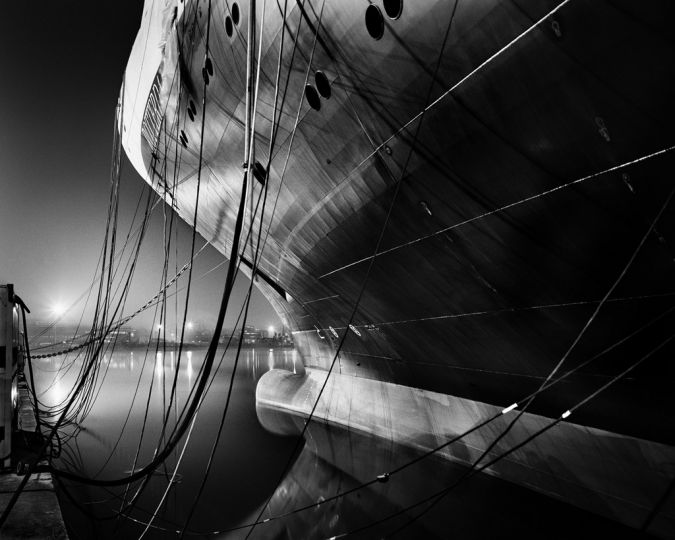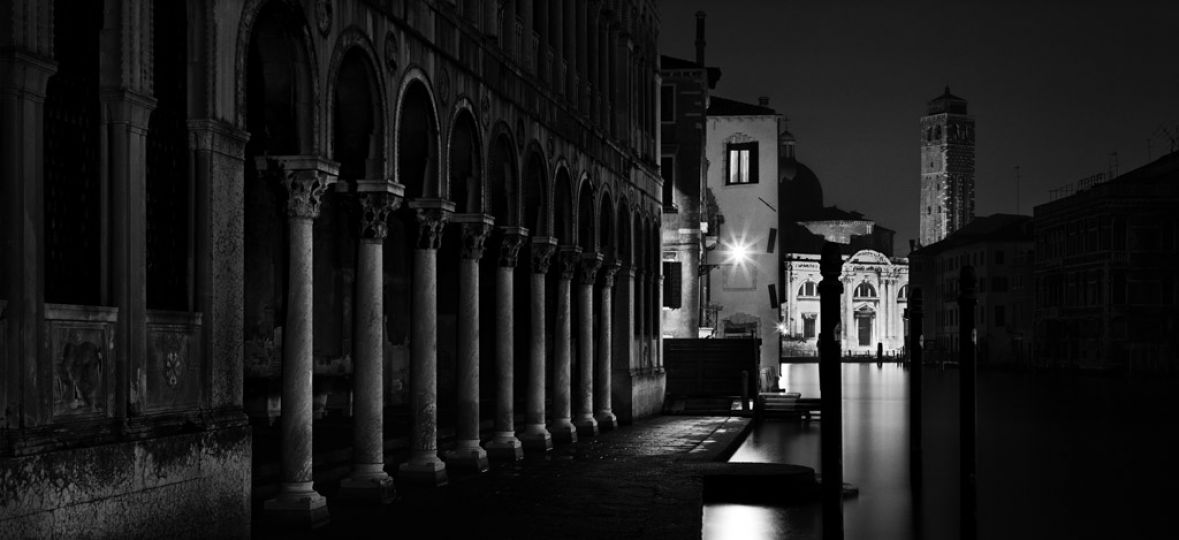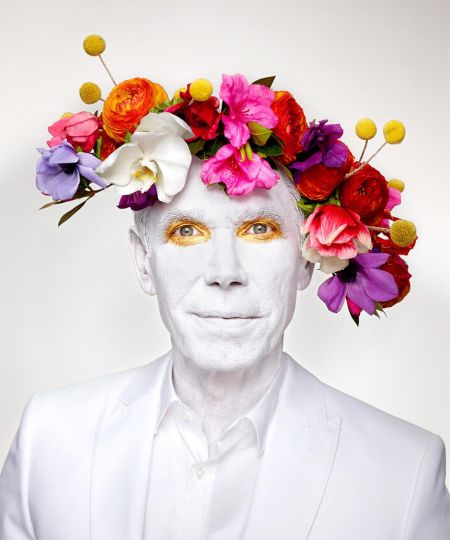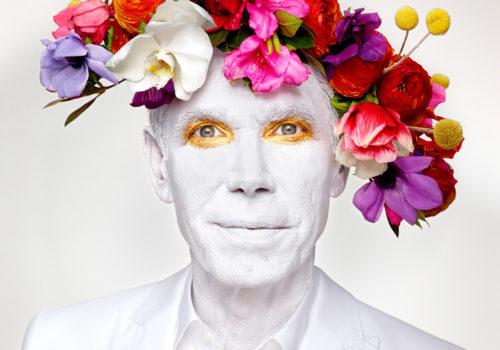What sort of animal is this photographer? He sees better at night, between dusk and dawn— but stormy skies will do at a pinch. Luca Campigotto seems to photograph stealthily, even though the landscapes are not likely to object. He lies in wait as if, with his evocative images,as if poaching some truth, or a story, without offering any caption to attest to the hidden dramaturgy. The pleasure of contemplation of these photographs requires tracking as well as analysis.
The open landscapes are made complex by an accumulation of man-made transformations or by natural activity which some might see as peaceful, but which the photographer portrays as thronging with distinct details, either natural elements or traces of history. In the shipyard photos, the details are enormous. The prow of a ship takes up two-thirds of one image; the arms of a crane partition another into several segments; a web of ropes and cables is suggestive of the bulk of a ship; while the reflection of ocean liners awaiting their passengers or the glow of a storefront are signs of activity. The horizon, extending far beyond the imposing foreground, completes the information about the context of the photograph.
In the case of built heritage, the work is less binary, and light is managed like a theater stage: bright light is aimed at the main characters, or, here, the most prestigious monuments, while dimmed lighting embraces the context. The photographs seem to release electricity, as if the buildings were carved with a laser and illuminated front and back like in a high-end portrait studio.
Luca Campigotto uses the details in these powerful and original photographs to transmit a wealth of feeling and information, while the large format of the prints invites us to decipher them at length. The paradoxical success of the photographer’s meticulous image enhancement lies in the fact that it appeals more to our senses than it does to the hyperrealism of which it is a product.
Observed at night and from a distance, completely deserted, Italy seems to be given only a furtive glance, which, however, reveals the depth and the weight of history, from the north to the south. The heritage of a country that has often reinvented art has posed a challenge to successive generations of artists. Luca Campigotto has found a solution at once in his meditative use of photography and in his unmediated contact with the mineral quality of his homeland. His catlike approach shows more than our eyes would have been able to see. His vision is at once selective and enhanced, gratifying and brutal, peaceful and soundlessly clamorous. All these independent images release a primary emotion, before absorbing us in a mute narrative they evoke.
EXHIBITION
Les règles de la vision
Luca Campigotto
From January 5 to February 26, 2016
Institut Culturel Italien de Paris
50, rue de Varenne
75007 Paris
France
Tel. +33 (0)1 44 39 49 39
http://www.iicparigi.esteri.it































